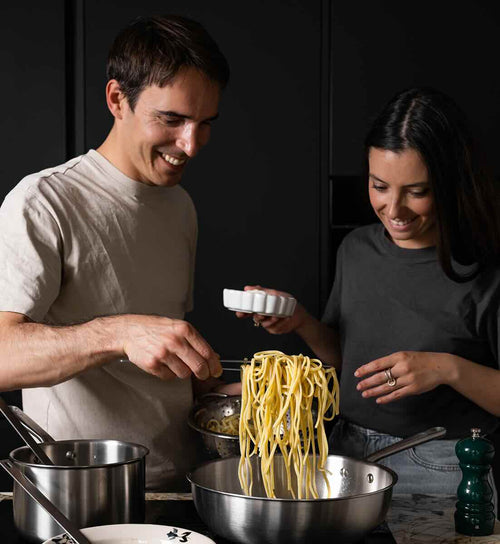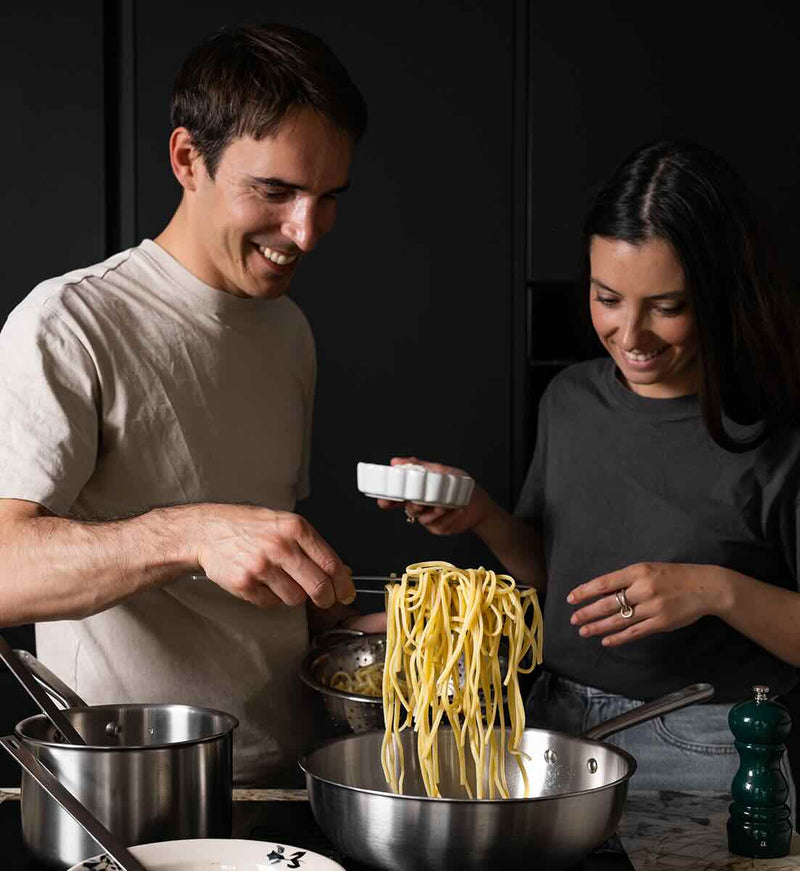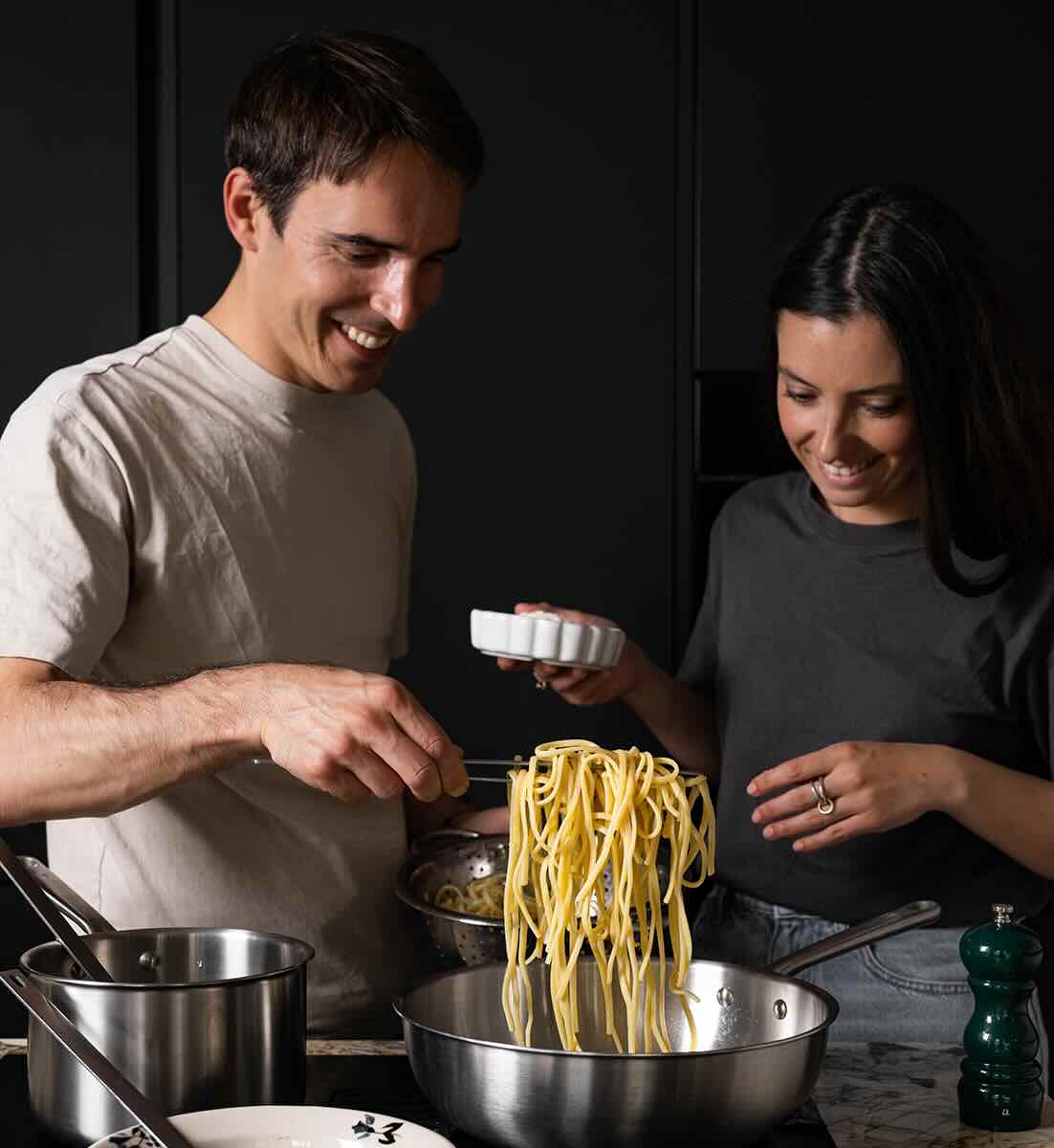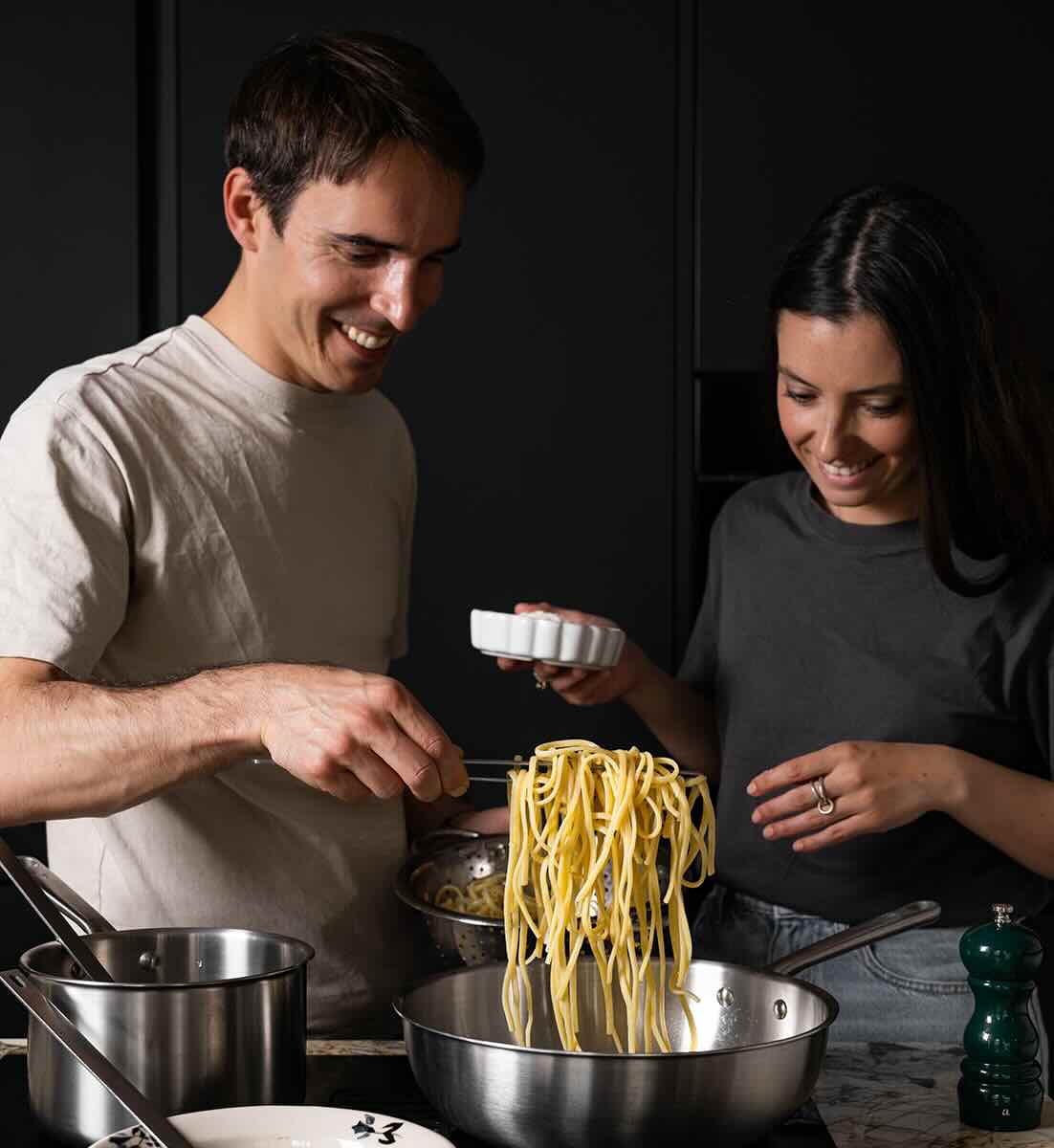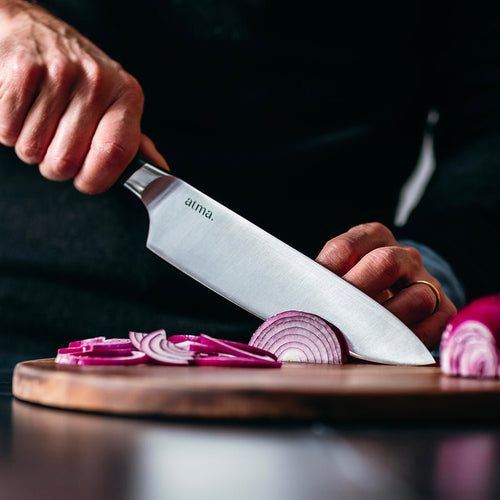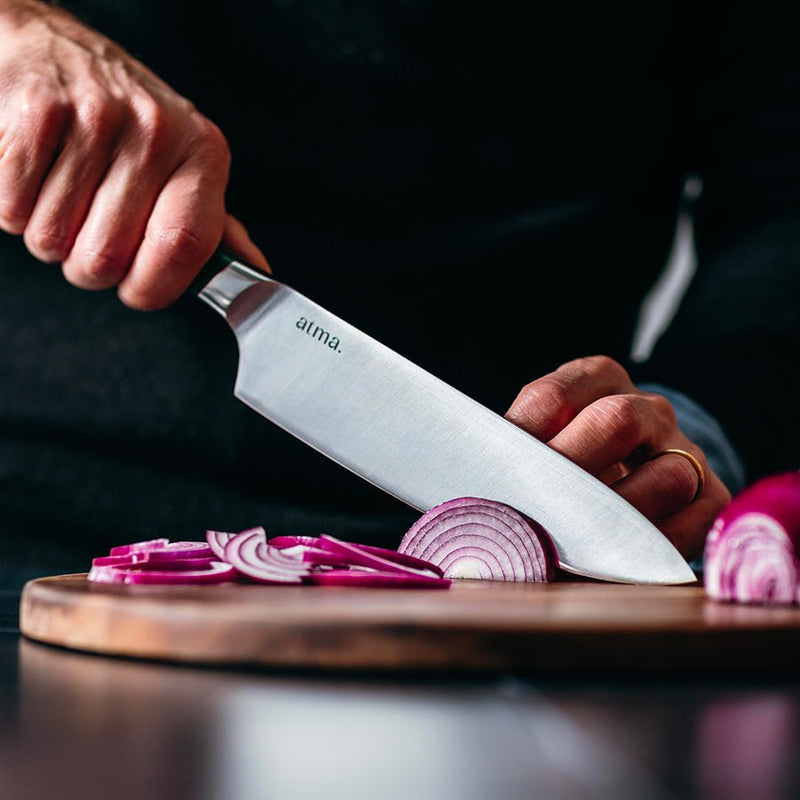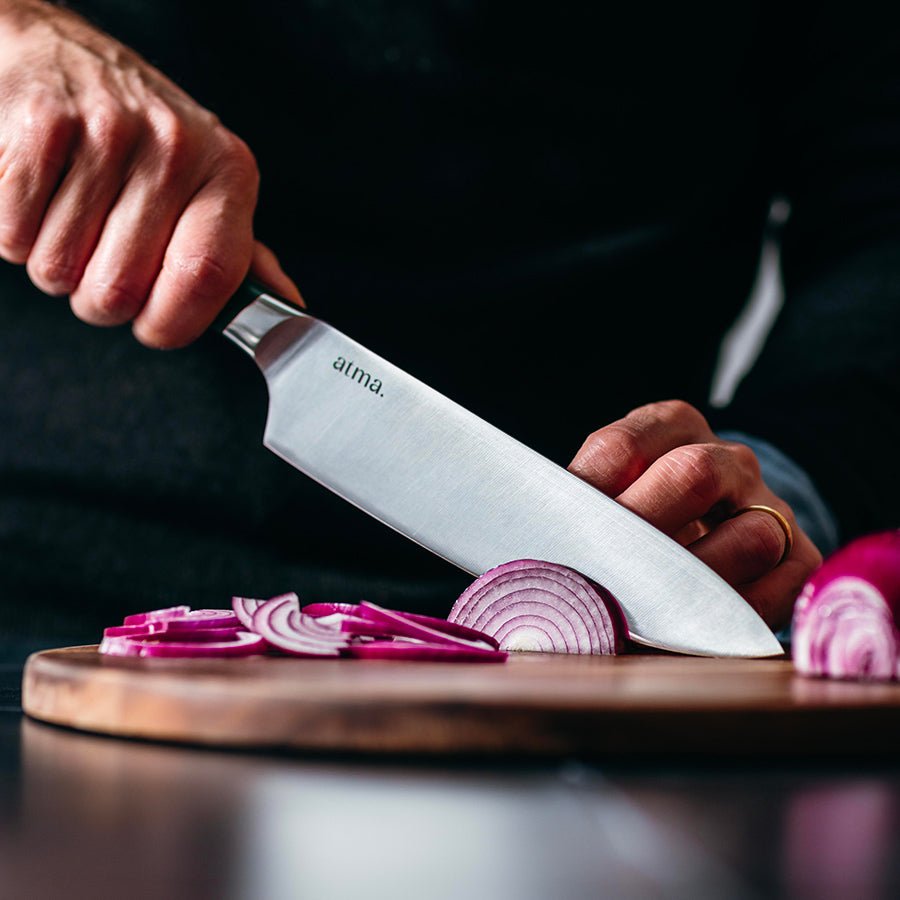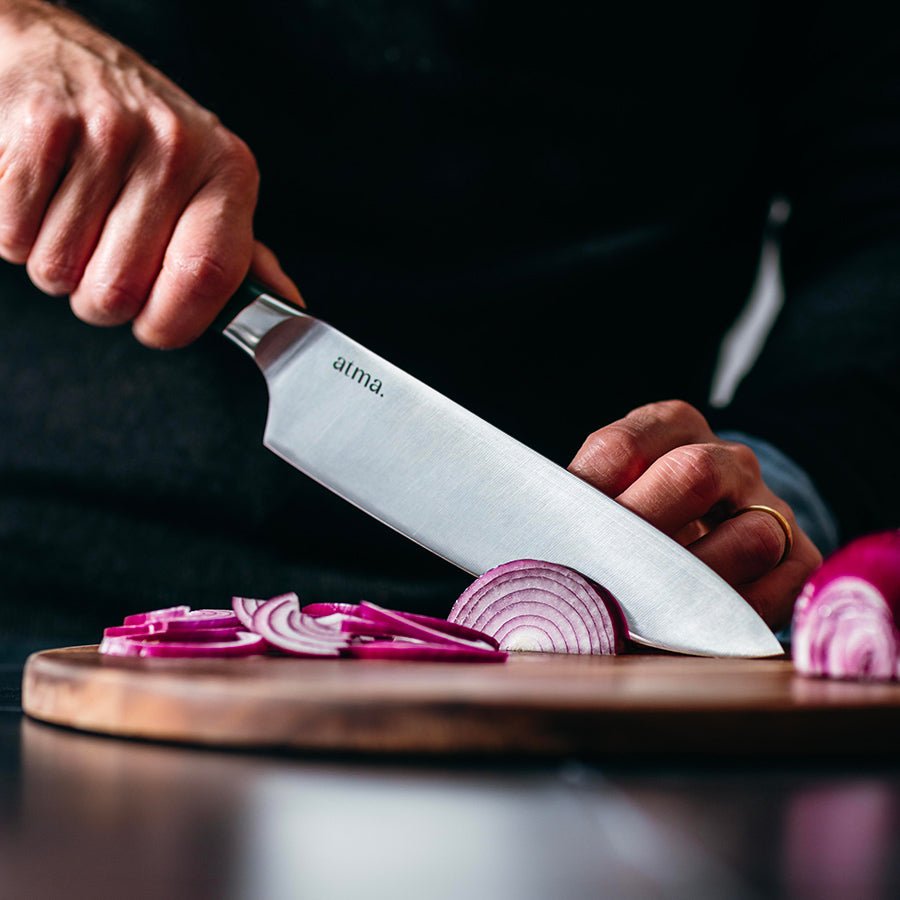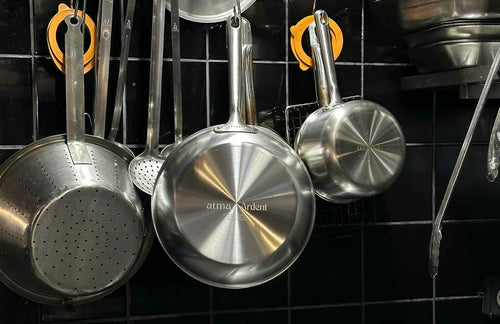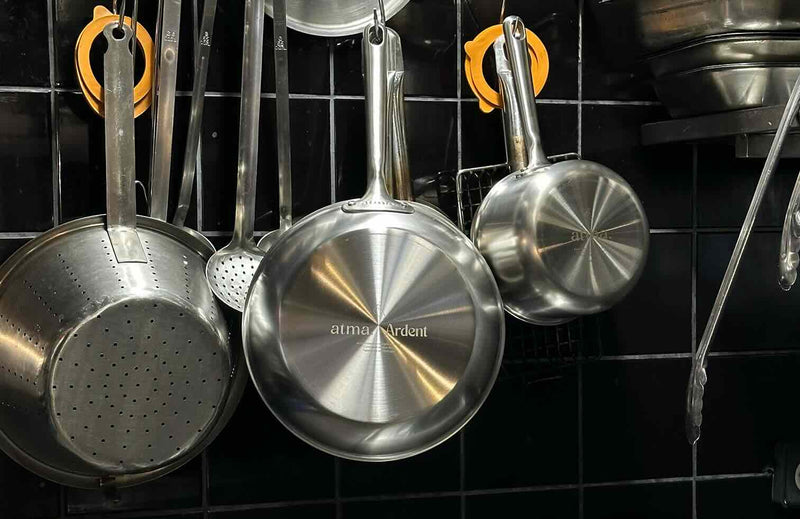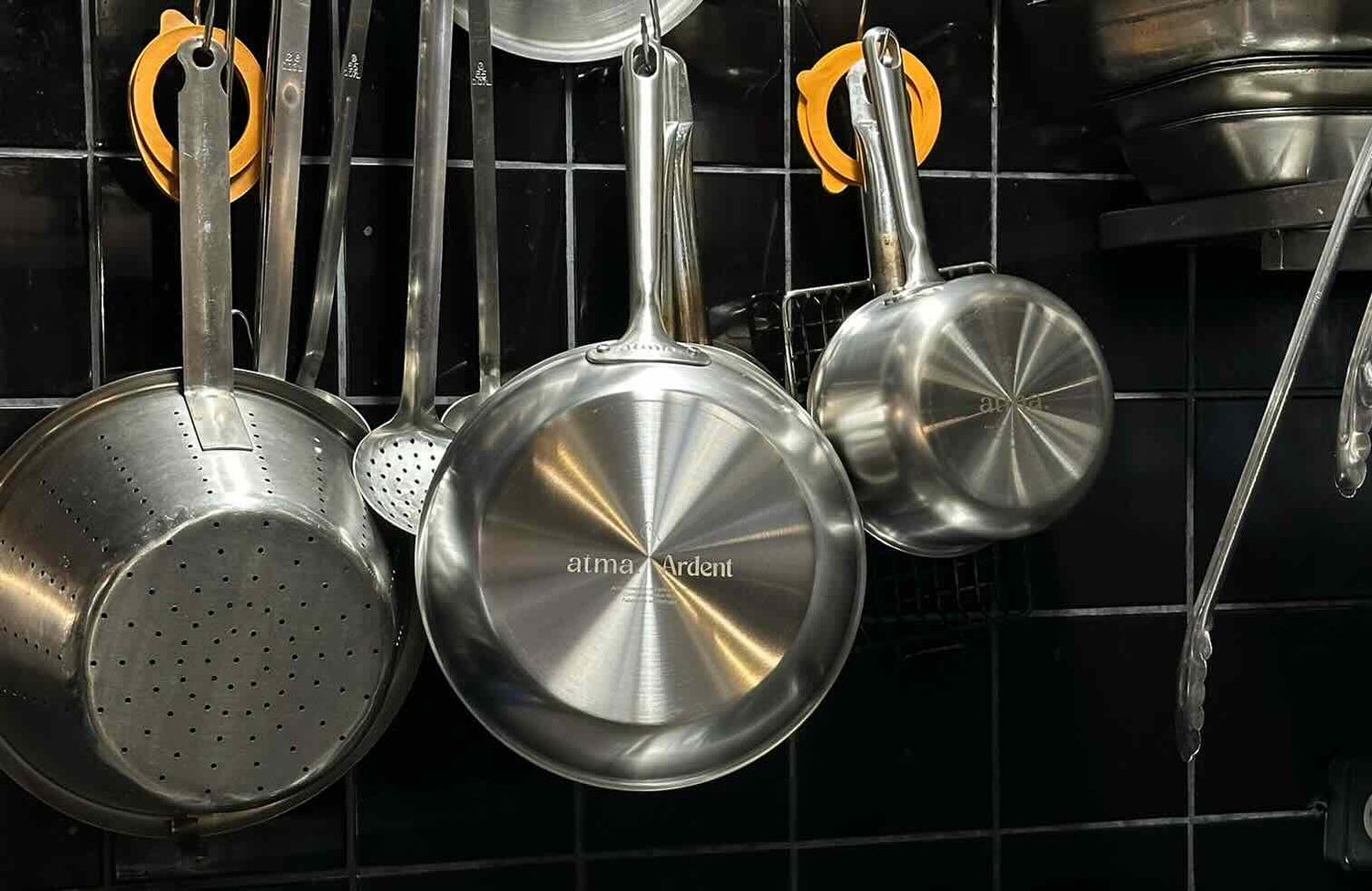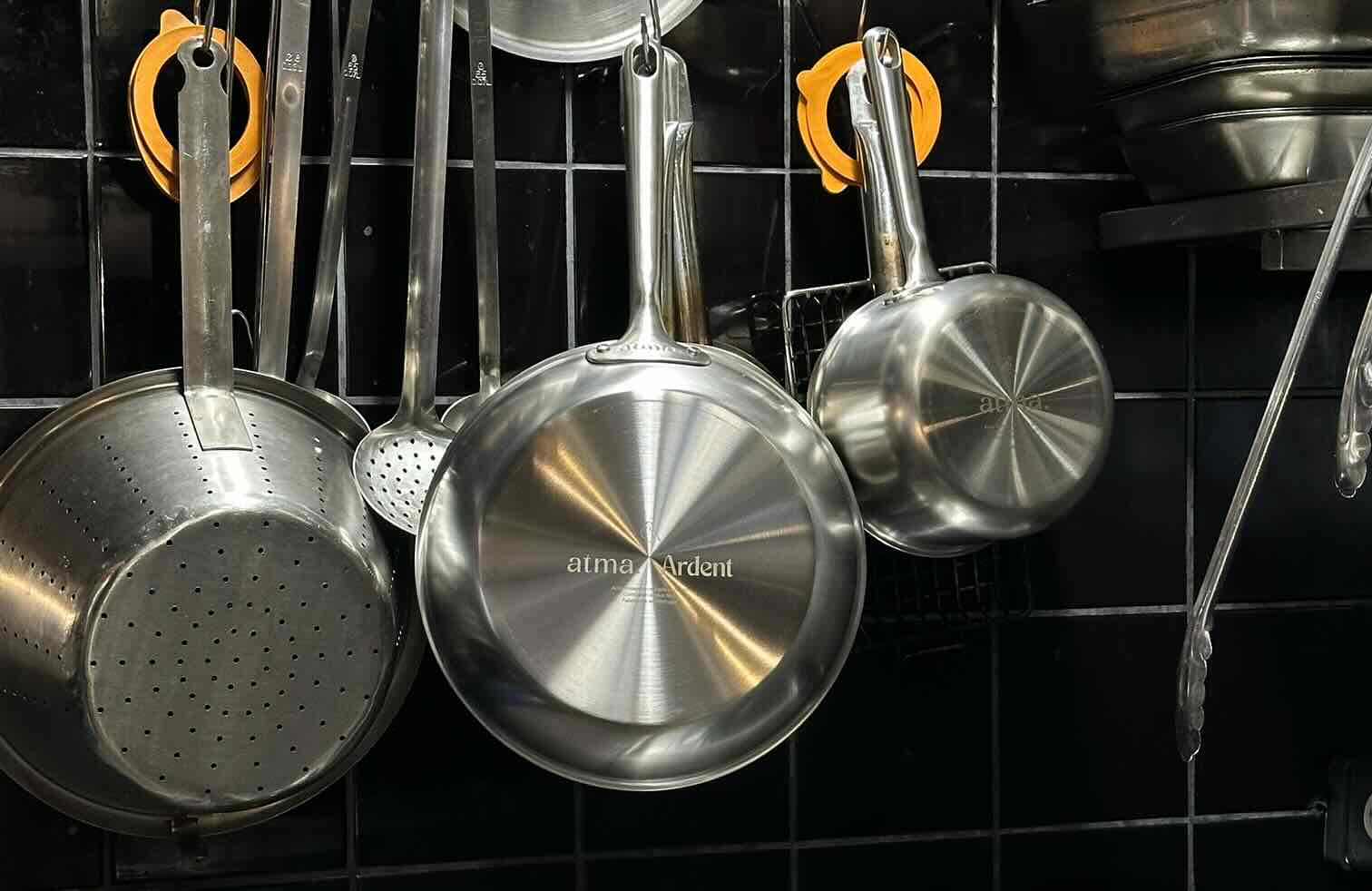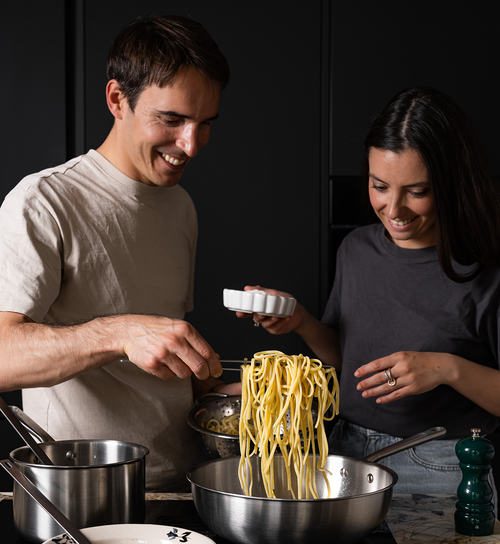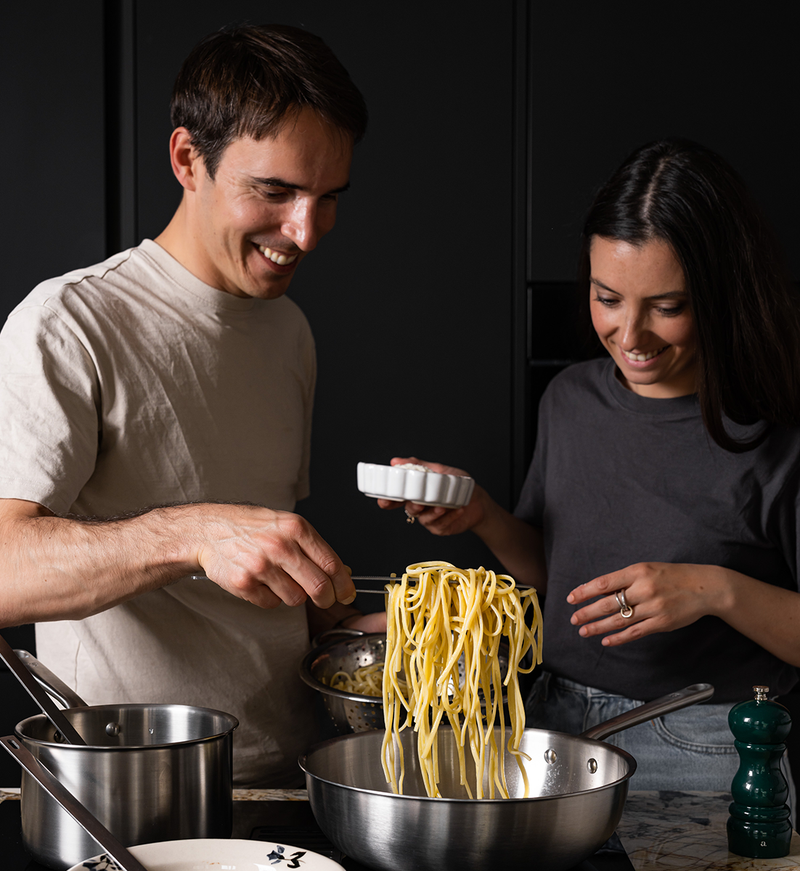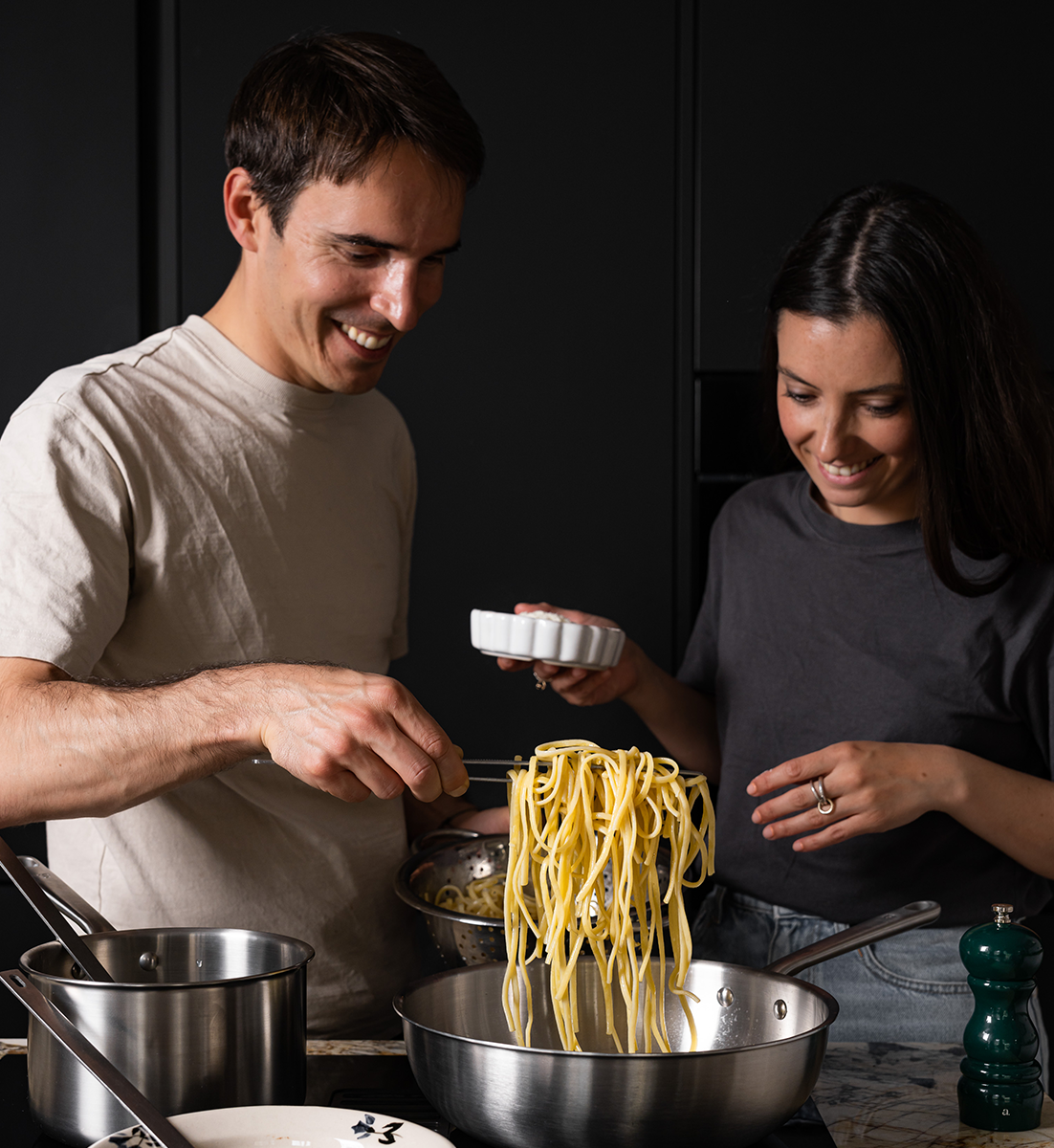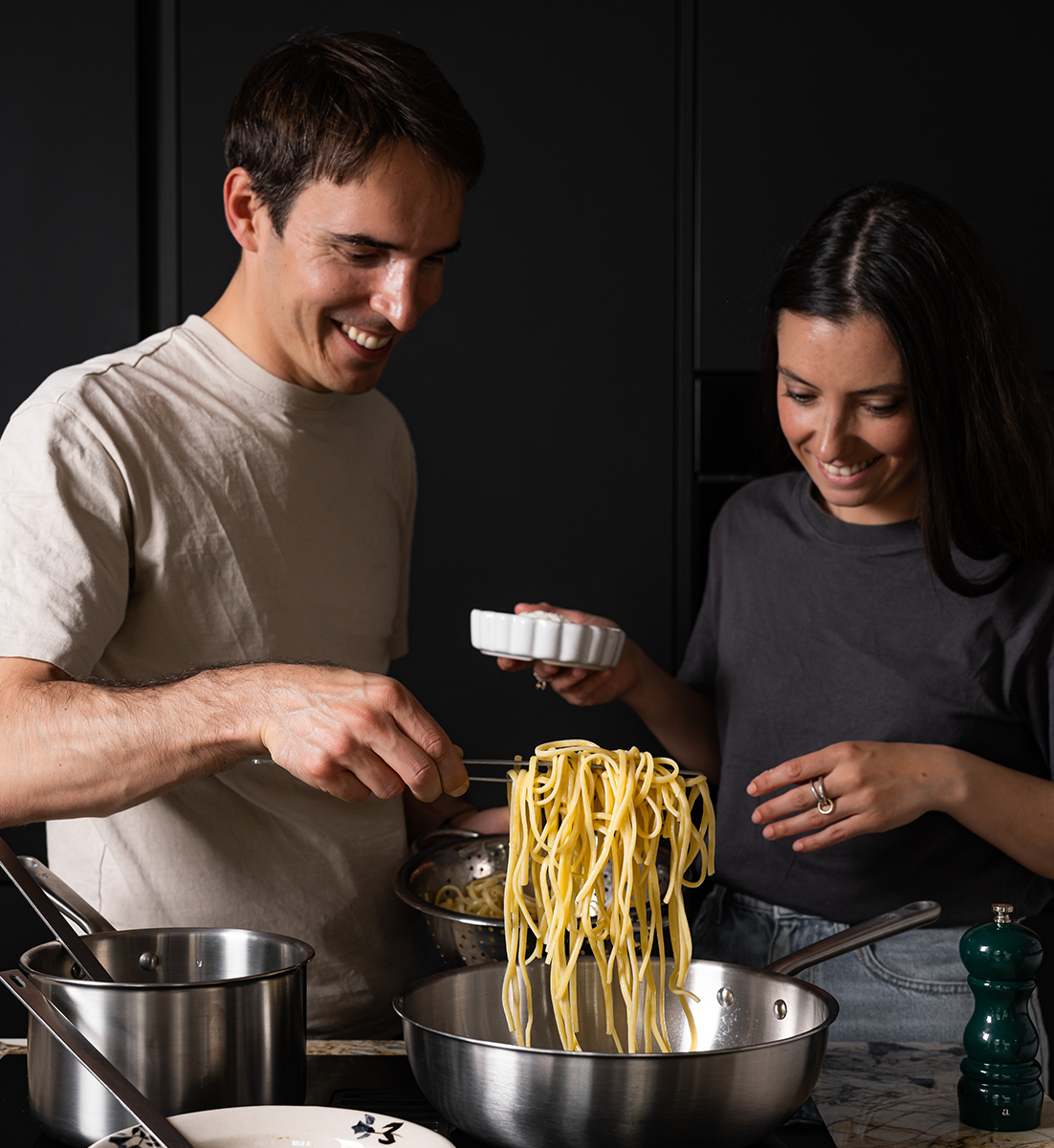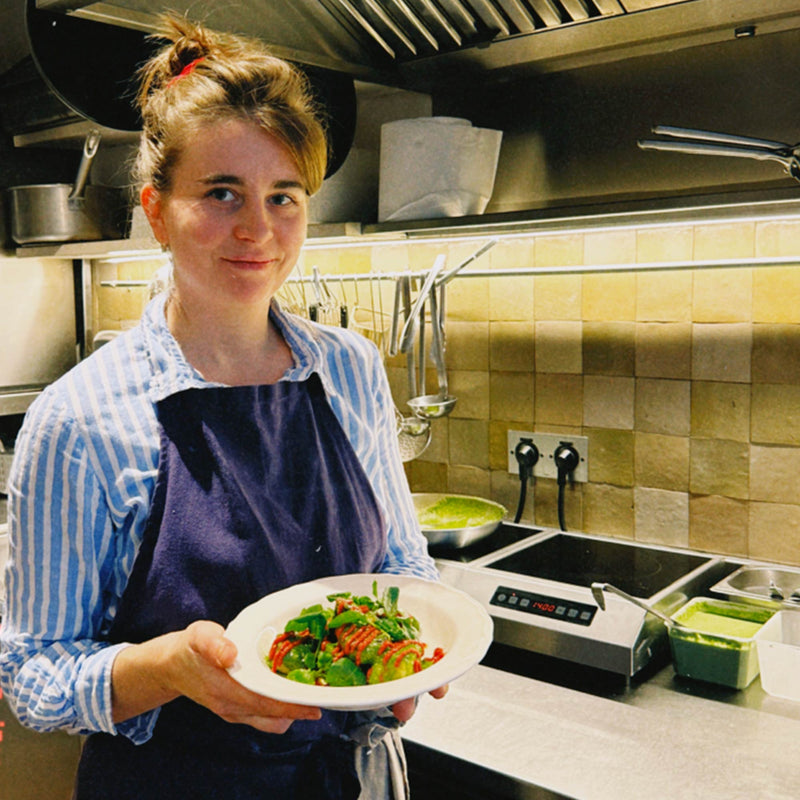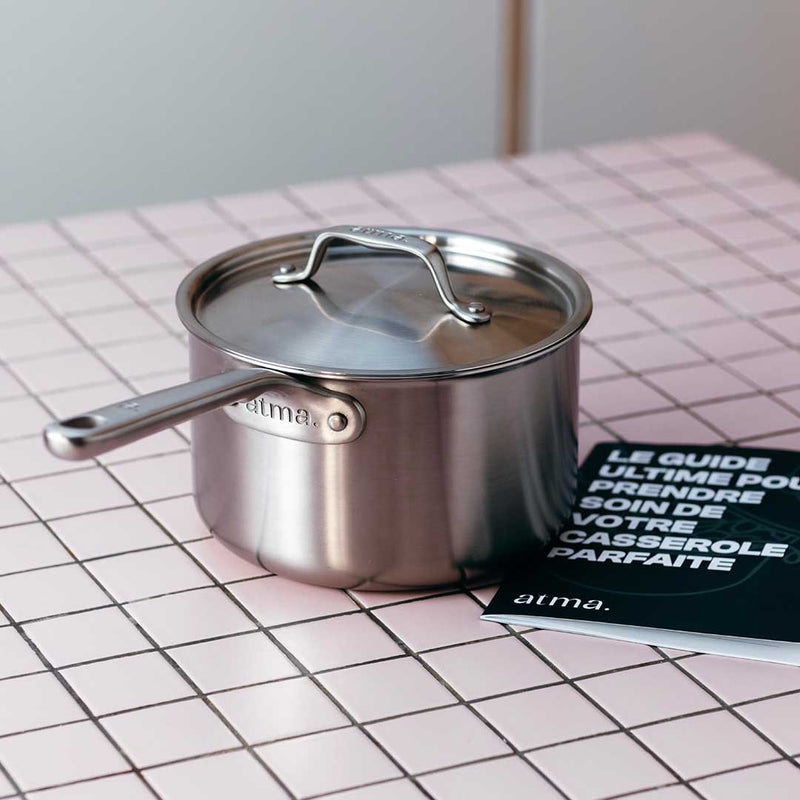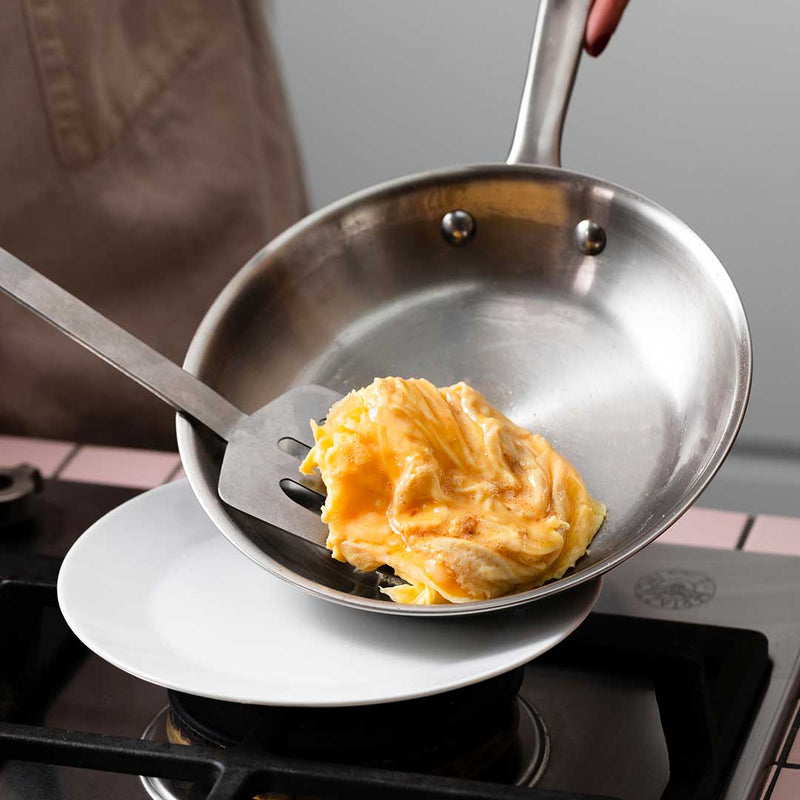Which pan should you choose for your health?
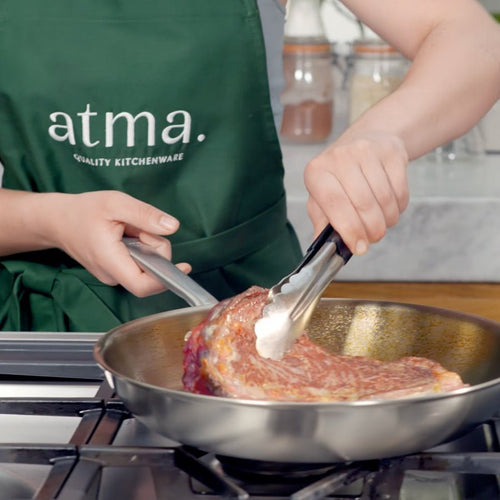
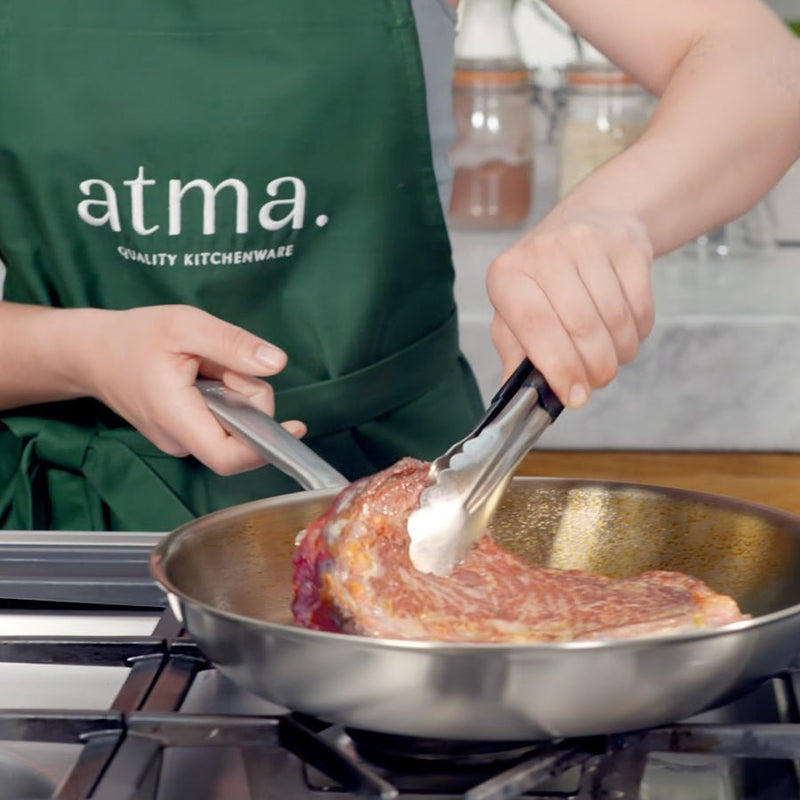
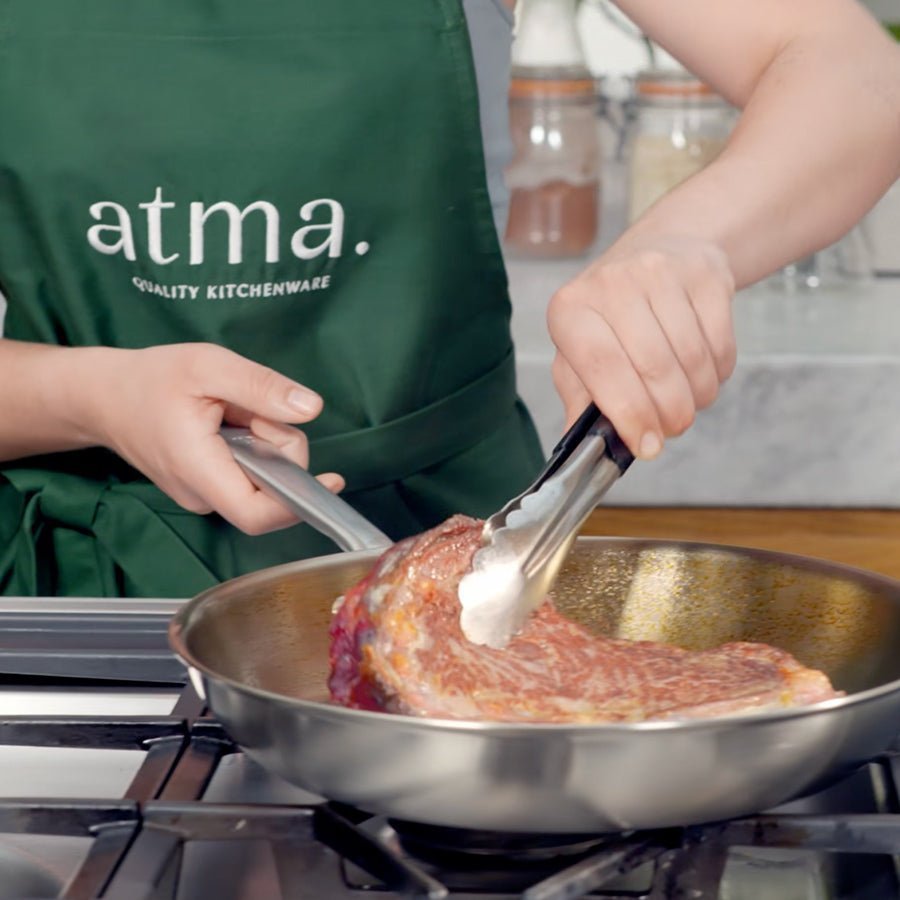
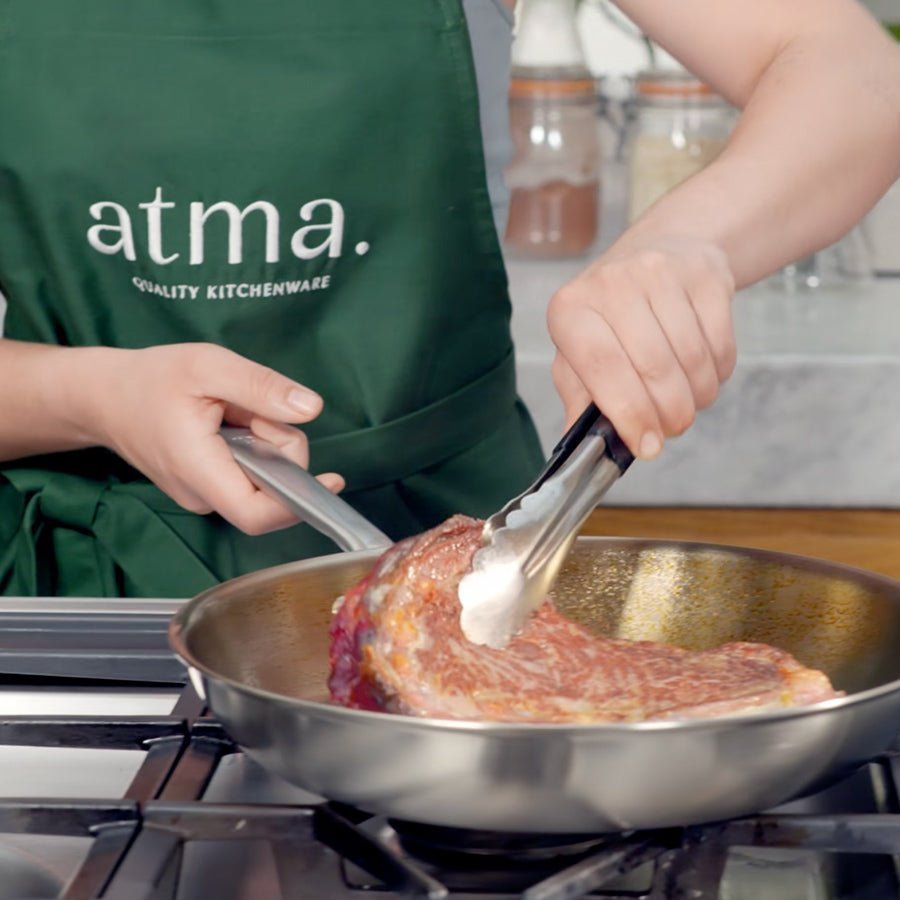




When it comes to equipping your kitchen, the topic of pans quickly comes to mind, as they play an essential role in preparing so many dishes. However, the choice of coating for your pans can significantly impact their performance, durability, and even your health. With the variety of coatings available on the market, it's crucial to understand the options and make an informed decision. Here are some tips to help you choose between: stainless steel pans, non-stick pans, cast iron pans, and iron pans.
So, we'd like to be transparent and tell you right away that at Atma, we're a little biased on this subject... Indeed, at Atma, we've long preferred 100% stainless steel cookware, and preferably multi-layer stainless steel like the one in our Bonne Poêle.
But to help you make your choice and make up your mind, here are some things to consider.
1. Think about how you'll use your pan
Before choosing a pan coating, think about how you plan to use it. If you mainly prepare foods that require high-temperature cooking, opt for durable materials like stainless steel. If you mainly prepare delicate foods, a non-stick coating may be useful to prevent food from sticking (although cast iron or stainless steel can also be used to prevent food from sticking).
2. Understanding the Different Types of Pan Coatings
There are several types of pan coatings (or saucepans, sauteuses, or other utensils), each with its own advantages and disadvantages. Non-stick coatings are popular for their ease of cooking and cleaning, but they wear out over time and release microparticles that are harmful to health and the environment. Stainless steel pans are sturdy and versatile, but require a little practice in knowing how to use them to prevent food from sticking (at Atma, we regularly share many tutorials to help you cook with stainless steel). Cast iron pans offer excellent heat retention, but require special care to prevent rust. Iron pans can become almost non-stick after being seasoned, but they are then difficult to clean, because to avoid damaging the seasoning, you cannot clean them with conventional cleaning products.
3. Consider the impact on your health
Some coatings can release harmful substances at high temperatures.
Let's start by discussing the healthiest coatings: stainless steel and cast iron pans are generally considered safe for your health. You'll certainly need to add a little fat when cooking (except for meat), but then you can cook anything in stainless steel or cast iron pans without any health risks (even pancakes, we made a video of cooking pancakes in a pan to prove it to you).
Otherwise, you're probably familiar with the Teflon scandal... Teflon pans can, when damaged, release microparticles that are then ingested by the body. Fortunately, Teflon has been banned in Europe since 2020 because it is known to be an endocrine disruptor.
So, if you choose a non-stick coating, look for options free of PFOA and PTFE, which are potentially dangerous chemicals.
Some manufacturers now offer a ceramic coating that also has non-stick properties, but so far doesn't seem to dull or deteriorate quickly.
Aluminum pans have long been used because aluminum is an excellent heat conductor, cheap to manufacture, and lightweight. However, numerous studies have shown that aluminum is bad for our health and that aluminum migrates into food if you cook in 100% aluminum cookware.
It's safer to use multi-layer stainless steel, which typically contains aluminum or copper at its core to benefit from its good thermal conductivity, but this layer is then encapsulated with 18/10 stainless steel so your food never comes into contact with the aluminum.
4. Evaluate Ease of Maintenance
The ease of maintenance of the coating is an important factor. Non-stick coatings are theoretically easy to maintain, but they can flake off over time. Stainless steel pans are durable, scratch-resistant, and dishwasher-safe. Cast iron and iron pans must be properly seasoned to prevent corrosion and maintain their non-stick properties. However, most coatings wash off easily with hot water and dish soap.
5. Consider your long-term budget.
Pan prices vary depending on the type of coating, the quality of the steel used, and the brand. It's also important to consider the lifespan of your pan when analyzing your overall budget. Pans with a non-stick coating have a lifespan of 3 to 5 years, whereas a stainless steel, cast iron, or iron pan will last a lifetime.
Okay, as you've probably guessed, at Atma, we're not big fans of non-stick coatings, but rest assured, there are other easy-to-use alternatives.
In the table below, we've compiled a brief comparison of the different coatings available for pans, along with the advantages and disadvantages of each.
Which pan should you choose? And which coating for your pan? Which pan should you choose? And what coating for your stove?

In summary: what are the important criteria to consider when choosing a good pan?
We've tried to summarize the main selection criteria to help you choose the best pan for your cooking needs. Unsurprisingly, stainless steel offers the most benefits, so all you have to do is try it!
And now, to finally convince you, we recommend reading this new article if you want to learn more about the right technique for cooking with stainless steel.
Learn more about choosing pans:
What is the healthiest coating for a pan?
Is choosing the ideal pan a real headache for you? Atma can shed some light. Let's start with the healthiest coating for a pan. If you value your health (and that of your family), choose ceramic or stainless steel pans. Ceramic is naturally non-stick and does not contain harmful chemicals, unlike some conventional pans with Teflon coatings. Stainless steel, on the other hand, is a durable and neutral material that does not react with food, perfect for healthy cooking. So, ceramic or stainless steel, we've made our choice!
Does a stainless steel pan season?
Unlike cast iron pans, stainless steel pans do not season. Seasoning is a technique that involves adding fat to create a non-stick surface. With stainless steel, this isn't necessary. However, you must know how to use them correctly to prevent food from sticking. Proper preheating and a small amount of oil work wonders.
How do I know if my pan is stainless steel?
It's simple: look at the label or the base of the pan. Quality stainless steel will often have a rating such as 18/10, meaning it contains 18% chromium and 10% nickel, a double guarantee of strength and durability.
How to choose the right pan size?
There's nothing worse than trying to stir-fry vegetables in a wok that's too small or make a crepe in a tiny crepe pan. The golden rule: adapt the size of the pan to the type of kitchen and the number of guests. For a family, a 28cm pan is often ideal, while a couple might be fine with a 24cm pan. Don't forget the smaller 20cm pans, perfect for fried eggs or toasting spices. And if you're a fan of grilling, a 26- to 30-cm grill pan can be very practical.
How to choose a good stainless steel pan?
To choose a good stainless steel pan, you need to focus on certain criteria. First, the quality of the stainless steel. Second, the thickness of the pan: the thicker it is, the better the heat distribution and the less likely food is to stick. An ergonomic and securely attached handle is also essential for comfortable use. Finally, check that your pan is compatible with all types of hobs, including induction. And yes, a good stainless steel pan is an investment, but it's worth every penny for a kitchen without burnt-on residue.
How to maintain a good stainless steel pan?
Stainless steel pans are generally very easy to maintain, especially if they're a high-quality pan. A simple wash with hot soapy water is enough to clean this material. For stubborn stains, a little white vinegar or baking soda will do the trick. Avoid abrasive sponges that could scratch the surface of your cookware.
Discover our best sellers
By Romain De Bona
























